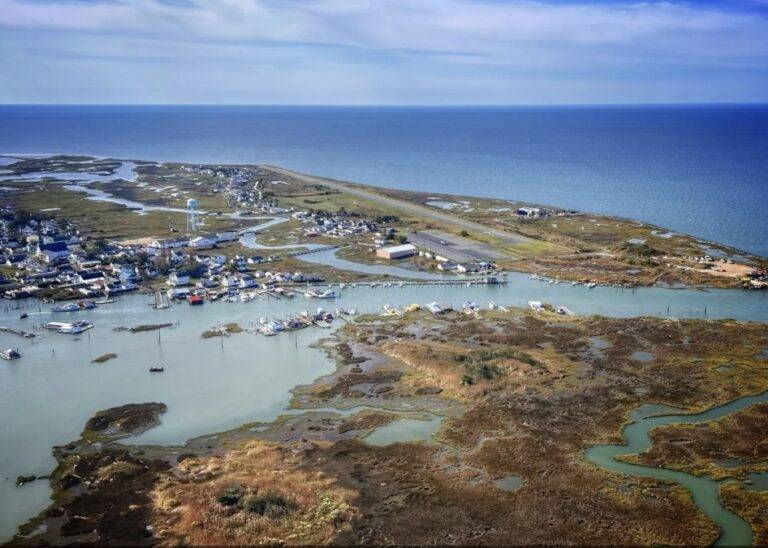WASHINGTON – Citizens for Responsible Energy Solutions (CRES) today named U.S. Senators Shelley Moore Capito (R-W.V.) and Bill Cassidy (R-La.) and U.S. Representatives Bruce Westerman (R-Ark.) and Jen Kiggans (R-Va.) as the 2023 CRES Clean Energy Champions.
“From advocating for renewable resources like wind and solar and working to achieve meaningful permitting reform to strengthening the resilience of our coastlines and forests, these lawmakers have demonstrated exceptional leadership among their peers—blazing the trail toward pragmatic solutions that leverage America’s carbon advantage, reduce global emissions, create jobs, and deliver affordable and reliable energy,” said CRES President Heather Reams. “I want to thank Senators Shelley Moore Capito and Bill Cassidy and Representatives Bruce Westerman and Jen Kiggans for their efforts to advance clean, affordable, and reliable energy solutions.”
Each year, CRES awards federal policymakers with the Clean Energy Champion award as a testament to their work supporting commonsense clean energy and climate legislation that protects our communities as well as our economy and to celebrate their commitment to building a clean energy future for America. The 2022 awardees were Senators Dan Sullivan (R-Alaska) and Kevin Cramer (R-N.D.) and Representatives Dan Newhouse (R-Wash.) and Mariannette Miller-Meeks (R-Iowa).
Senator Shelley Moore Capito (R-W.V.) is the ranking member of the Senate Environment and Public Works Committee, which has sprawling jurisdiction over energy, infrastructure, and the environment. As a Mountain State native, Senator Capito knows firsthand the government needs to cut red tape, so that emissions will decrease by mining, building, and manufacturing with clean, American resources. To that end, Senator Capito introduced reforms that were signed into law this Congress which will speed up onerous and bureaucratic reviews. Senator Capito also has worked to pave the path towards meeting global climate goals and zero-emission energy generation through her support of nuclear power. The Accelerating Deployment of Versatile Advanced Nuclear for Clean Energy (ADVANCE) Act of 2023 asserts America as a leader in nuclear energy, updates the regulatory structure around nuclear power, and streamlines the process for building nuclear reactors. The CRES-endorsed ADVANCE Act was recently included in the Senate-passed defense authorization bill.
As the Senior senator from a Gulf state, Senator Bill Cassidy (R-La.) serves as a crucial voice on the Senate Energy and Natural Resources Committee for a balanced, all-of-the-above approach to energy development. Senator Cassidy’s support for the Infrastructure Investment and Jobs Act was key to securing new investments in American-made clean energy. He recently reintroduced the Reinvesting in Shoreline Economies and Ecosystems (RISEE) Act, which CRES endorsed because it returns offshore wind revenues to the states for coastal restoration, hurricane protection, fisheries management, and more.
Congressman Bruce Westerman (R-Ark.) serves as Chairman of the House Natural Resources Committee where he has promoted policies to unlock American resources as a means to lower global emissions. He championed the effort to reform America’s broken permitting scheme by introducing and passing into law this Congress significant, bipartisan reforms that put shovels in the ground on clean energy projects across the country. As a career engineer and forester, Chairman Westerman has spent decades advancing scientific solutions to forestry, land management, and natural carbon sequestration. This Congress, he introduced CRES-endorsed legislation, the Save Our Sequoias Act, which preserves America’s wooded assets by unlocking their use for future generations and trap carbon in the world’s best carbon sinks: our forests.
Representing a large part of the Chesapeake Bay, Congresswoman Jen Kiggans (R-Va.) is a champion of conservation and clean energy. She was handpicked by her peers to serve as Vice Chair of the Water, Wildlife, and Fisheries Subcommittee on the House Natural Resources Committee as a freshman lawmaker. Southeast Virginia offers a wealth of clean power, and Congresswoman Kiggans understands the importance of investment certainty for offshore wind, which supports local jobs and economic growth. Importantly, as a U.S. Navy veteran, she is a proud leader in the House on unleashing America’s energy resources to strengthen national security and lower global emissions. Recently, Congresswoman Kiggans introduced bipartisan legislation to boost environmental education in the Bay region, restore the health of the Bay Watershed, and preserve the Bay’s ecosystems and fisheries for generations to come.




Efforts to advance clean, affordable, and reliable energy solutions?
If they are talking about windmills and solar farms, that is a real sick joke, and anyone making that specious claim must think we are all uninformed morons, idiots and fools.
Consider this story from Energy News Network titled “Advocates want guarantee Dominion’s offshore wind project will live up to its promise – The utility behind the country’s largest offshore wind project is in a standoff with regulators and advocates over a condition that would prevent customers from paying a higher price if the project underperforms expectations” by Elizabeth McGowan on September 28, 2022, where we have this dose of reality to consider, to wit:
Virginia clean energy advocates are elated about the prospect of Dominion Energy’s 2.6 gigawatt offshore wind farm coming online in 2026.
They just want assurance that the $9.8 billion project will deliver power as promised and not burden ratepayers with surprise bill increases.
Those demands are now fueling a standoff over what would be the country’s largest offshore wind farm.
After years of planning, Dominion says a consumer protection clause added last month by state regulators is “untenable” and will force it to shut down the project.
The condition, known as a performance standard, would require Dominion to refund customers with credits if the wind farm generates less power than expected.
It prohibits the utility from collecting money from ratepayers to pay for any replacement power it needs to cover shortfalls from poor performance.
Dominion wants the performance standard removed from the conditional approval the State Corporation Commission granted the project on Aug. 5.
However, customer and renewable energy advocates are rallying around the standard, claiming it’s a pivotal safeguard for consumers.
The wind farm would consist of 176 turbines installed 27 miles from Virginia Beach.
Dominion customers would cover all development and operation costs, which add up to an estimated $21.5 billion over 30 years.
That figure includes the investor-owned utility’s guaranteed rate of return, estimated to be in the neighborhood of $7.2 billion.
Earlier on, Dominion had projected a capacity factor between 38% and 46% over 30 years.
Last month, regulators said ratepayers shouldn’t be responsible for any shortfall in output below an annual net capacity factor of 42%, measured on a three-year rolling average.
Briefly, capacity factor is the ratio of the average load carried by a system for a given time period to the rated capacity of that same system for the same period.
In its Aug. 22 petition, Dominion attorneys asked the SCC to reconsider the performance standard, calling it an “unprecedented imposition of an involuntary performance guarantee.”
“As ordered, it will prevent the Project from moving forward, and the Company will be forced to terminate all development and construction activities,” they wrote.
end quotes
FOCUS ON THESE WORDS: Dominion customers would cover all development and operation costs, which add up to an estimated $21.5 billion over 30 years.
Then we go to October 31, 2022 and a Workboat article titled “Dominion Energy, Virginia reach settlement on offshore wind costs” by Kirk Moore where we have as follows on that same subject, to wit:
A proposed settlement between Dominion Energy, the Virginia attorney general and other groups would set up new consumer protections and performance reporting for the Coastal Virginia Offshore Wind project.
The settlement is a compromise with Dominion, which had objected to hard power performance guarantees demanded by the State Corporation Commission on Aug. 5.
The state regulators wanted to hold the $9.8 billion CVOW to producing at least a 42 percent annualized average of its maximum 2.6-gigawatt capacity, and would have forbidden passing additional costs on to ratepayers if the 176-turbine array fails to perform to that level.
In a Sept. 29 filing with the commission, Dominion warned the performance guarantee would “prevent the project from moving forward and the company will be forced to terminate all development and construction activities” – despite already investing $839 million, including two pilot project turbines 27 miles off Virginia Beach, and ongoing construction of the wind turbine installation vessel (WTIV) Charybdis at Brownsville, Texas.
Dominion and Attorney General Jason Miyares announced the settlement plan Friday, after filing a joint stipulation and recommendation with the State Corporation Commission, which must approve it.
“This hard-fought agreement includes unprecedented consumer protections for Virginians,” said Miyares.
“Traditionally, Virginia consumers have paid for all of the costs of utility projects.”
“Today’s agreement changes that in the event of cost overruns.”
“Dominion Energy has agreed to cost sharing and a cost cap on construction expenses, after which it will be responsible for all cost overruns.”
“The agreement also includes a performance standard designed to ensure that the project produces the energy promised.”
Instead of the hard performance minimum guarantee the commission originally called for Aug. 5, Dominion said the settlement poses an alternative, requiring detailed reporting on turbine performance.
“The company will not be required to guarantee future energy production levels or factors beyond its control as was outlined in the August (state commission) Order.”
“Instead, the company will provide a detailed explanation of the factors contributing to any shortfall in energy output from projected amounts in a future SCC proceeding,” according to a summary released by Dominion.
If the SCC does find excessive costs come from “unreasonable or imprudent actions” on Dominion’s part, the commission could hold the company responsible.
The settlement spells out how cost overruns would be allocated.
“Should the project run materially over budget, it will come out of Dominion’s pocket, not consumers’,” according to Miyares.
“The agreement provides for initial cost sharing between customers and Dominion up to $11.3 billion.”
“If the construction costs fall between $10.3 billion and $11.3 billion, Dominion and consumers will share those additional costs evenly.”
“If the construction costs of the project exceed $11.3 billion, Dominion is required to pay those additional costs in full,” according to a statement from the attorney general’s office.
“In the unlikely event that the project’s construction costs exceed $13.7 billion, the project will be put back before the SCC for a further determination of viability and/or cost allocation,” according to the attorney general’s office.
“This feature of the agreement protects all stakeholders from catastrophic cost overruns.”
end quotes
A lot of weasel words!
And who is going to enforce them?
And nowhere in any of that is any hint that prices are going to do anything but go up?
And also note that capacity factor bidness – the windfarm, while rated at 2.6-gigawatt capacity, will only deliver some percentage of that, and that percentage IS NOT GUARANTEED!
So how do these people twist that truth to make these things “economical” and “reliable?”
What a CROCK!